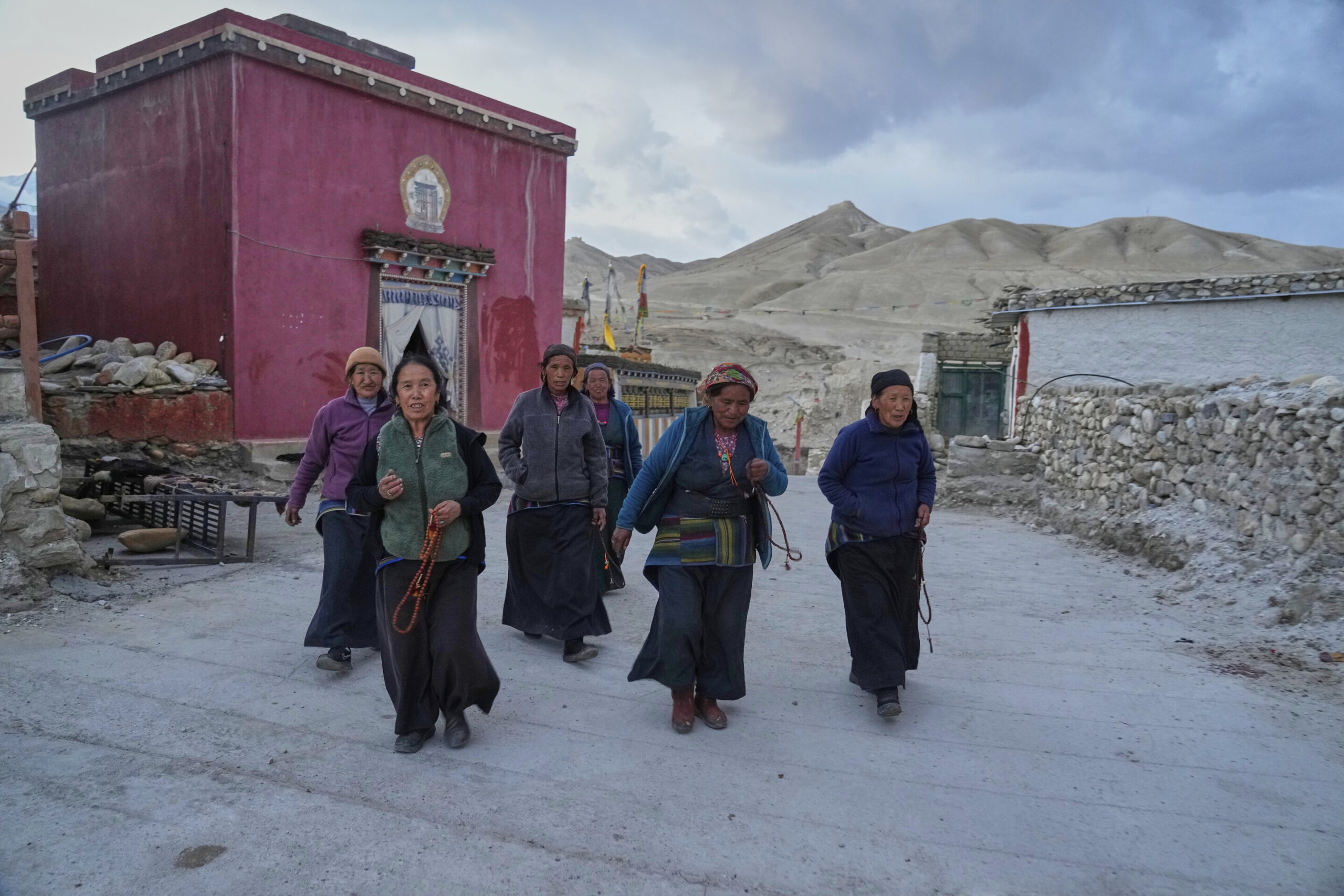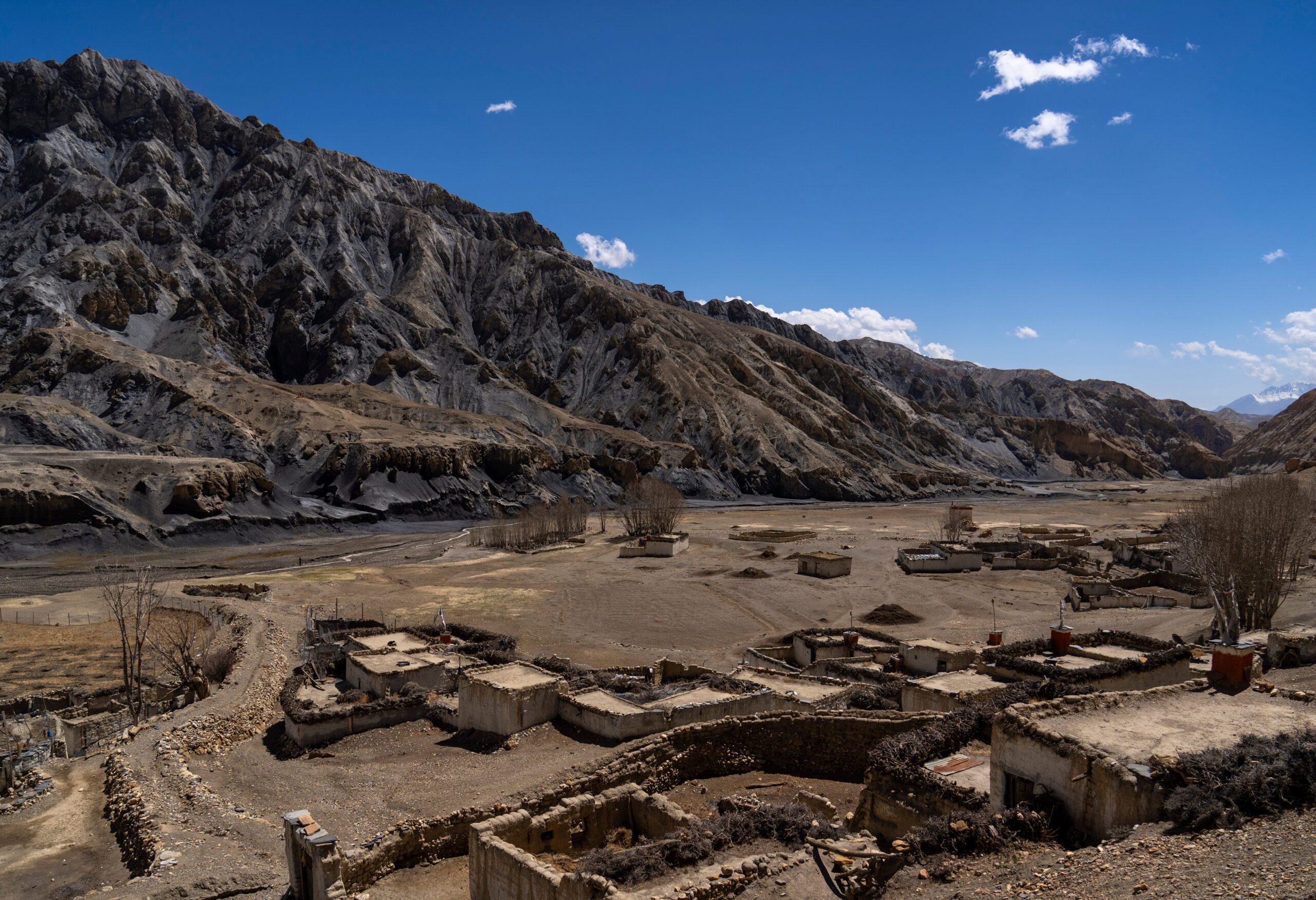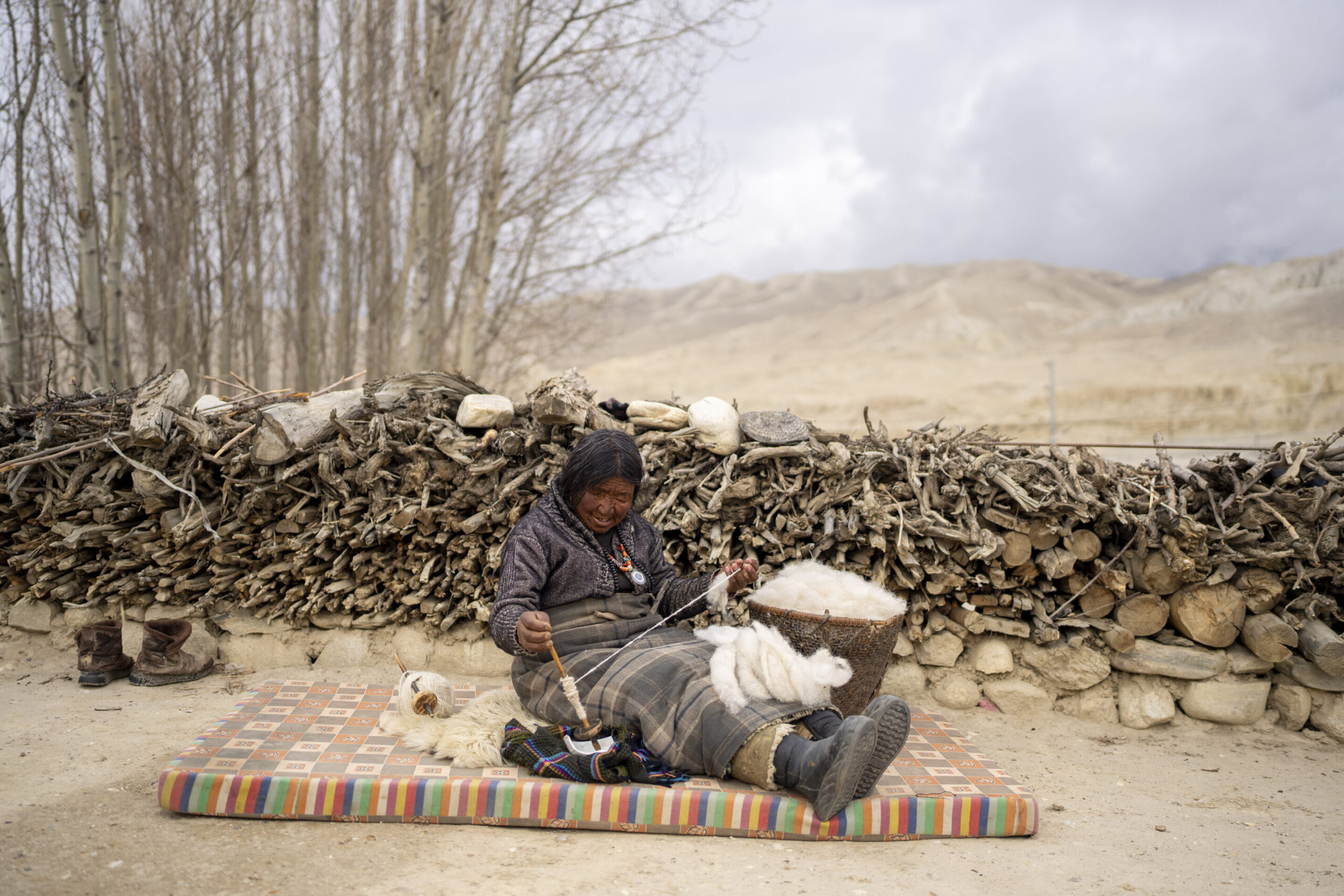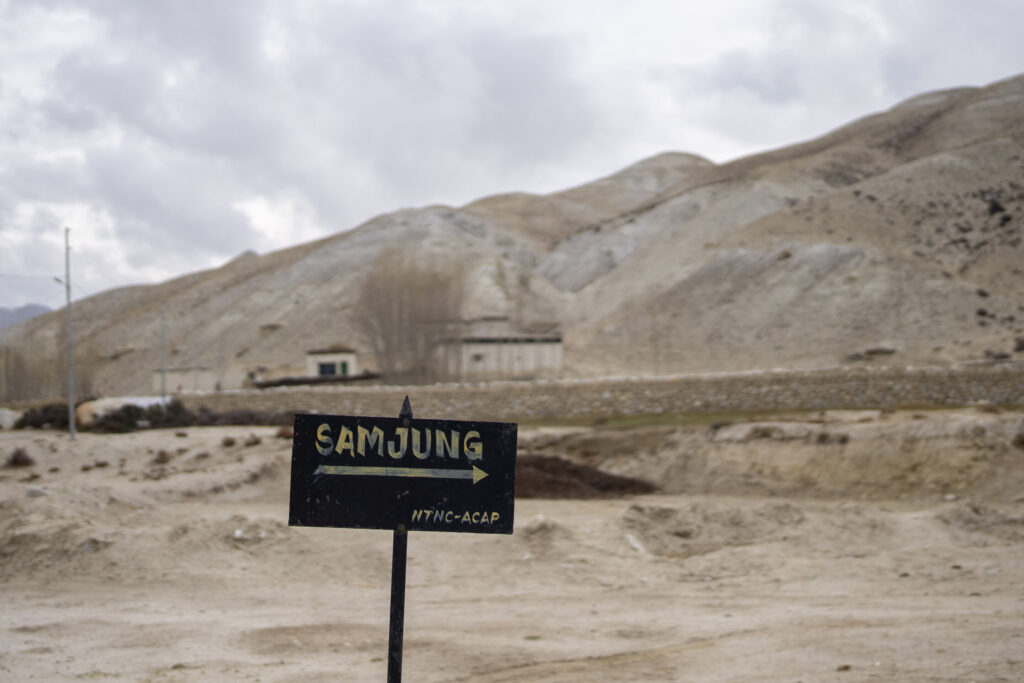Once a peaceful village nestled beneath snow-capped cliffs and ancient “sky caves,” Samjung in Nepal’s Upper Mustang has become a haunting symbol of the climate crisis. At over 13,000 feet above sea level, the Buddhist village lived for generations on barley farming, sheep grazing, and spiritual rhythm. Today, it stands abandoned — the latest casualty of a warming planet.

What Happened to Samjung?
As snowfall disappeared and springs dried up, life turned into a daily struggle for water. Once thriving glacial streams vanished. Mud homes collapsed in sudden flash floods. Fields cracked. Crops failed. The villagers had no choice but to leave.
“We moved because there was no water,” says Kunga Gurung, 54, who lived in Samjung his entire life. “You can’t live without it.”
A Global Warning in a Local Tragedy
The Hindu Kush-Himalayan region is warming faster than the global average. Scientists say nearly 80% of its glaciers may disappear this century without drastic emission cuts. These melting glaciers feed rivers vital to over 1.9 billion people across Asia.

Rebuilding Life, 15 Kilometers Away
After a decade of migration, Samjung’s villagers have resettled 9 miles away near the Kali Gandaki River. The land was provided by the local monarch — a rare gesture in a post-monarchy Nepal. Here, they built new mud homes, water canals, and are planting apple trees, hoping to rebuild life from the soil up.

From Samjung’s silent hills to rising seas in island nations, climate change is displacing communities worldwide. But Samjung is unique — a village erased not by war or poverty, but by a vanishing glacier.
A Prayer for Tomorrow
As villagers pray at dawn and lead their sheep across new valleys, one message echoes: the climate crisis is not tomorrow’s problem — it’s today’s loss.


